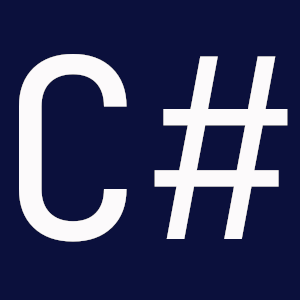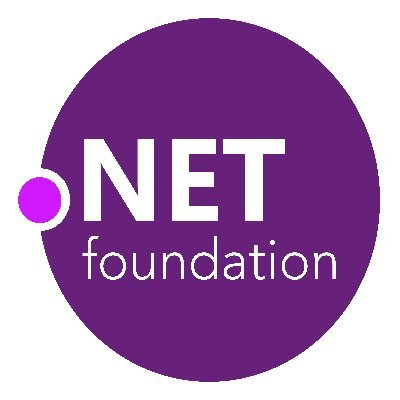
David Grace - Round The Code
@RoundTheCode
.NET enthusiast 🚀 | Visit my website for .NET tutorials, code examples, and coding challenges 💻 | Teaching .NET through my YouTube channel 🎥
Was dir gefallen könnte
To practice C#, you could turn on your computer and wait for Visual Studio to load. But wouldn't it be good to practice online? Check out my online code editor so you can practice your C# coding skills with this coding challenge to convert mph to kph. roundthecode.com/dotnet-coding-…
You can call EnsureSuccessStatusCode in a HttpResponseMessage type when making an API call in your .NET project. With this line, if an unsuccessful status code is returned from the HTTP response, it will throw an exception.

Learn about adding SignalR to your ASP .NET Core project so you can add real-time communication. As well as sending and receiving messages, you'll also learn about how to send messages to different connected clients. Watch my video to find out more. youtube.com/watch?v=Mhgb_D…

youtube.com
YouTube
Use SignalR to send and receive a message in real-time
You can call multiple asynchronous jobs and await all of them to complete by using Task.WhenAll. Task.WhenAll will only be completed when all tasks specified in its parameters are completed.

Feature Management in ASP .NET Core allows you to add feature flags. You do it by adding the Microsoft.FeatureManagement.AspNetCore NuGet package and calling AddFeatureManagement extension method.
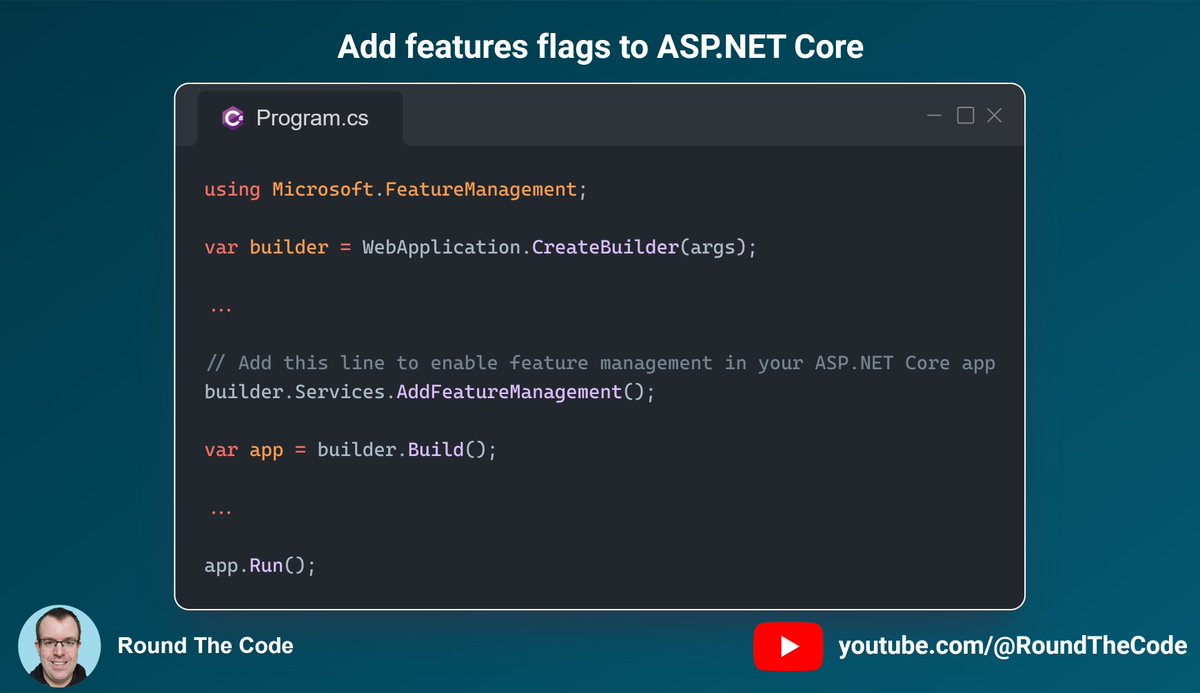
Learn about SignalR and how to send and receive a message back from a hub. Messages can be sent to all clients, or to particular clients. roundthecode.com/dotnet-tutoria…
You can use IConfiguration, IOptions or IOptionsSnapshot to get appsettings configuration values into an ASP .NET Core application. But which one should you use? Watch my video to find out. youtube.com/watch?v=FAV1Xt…
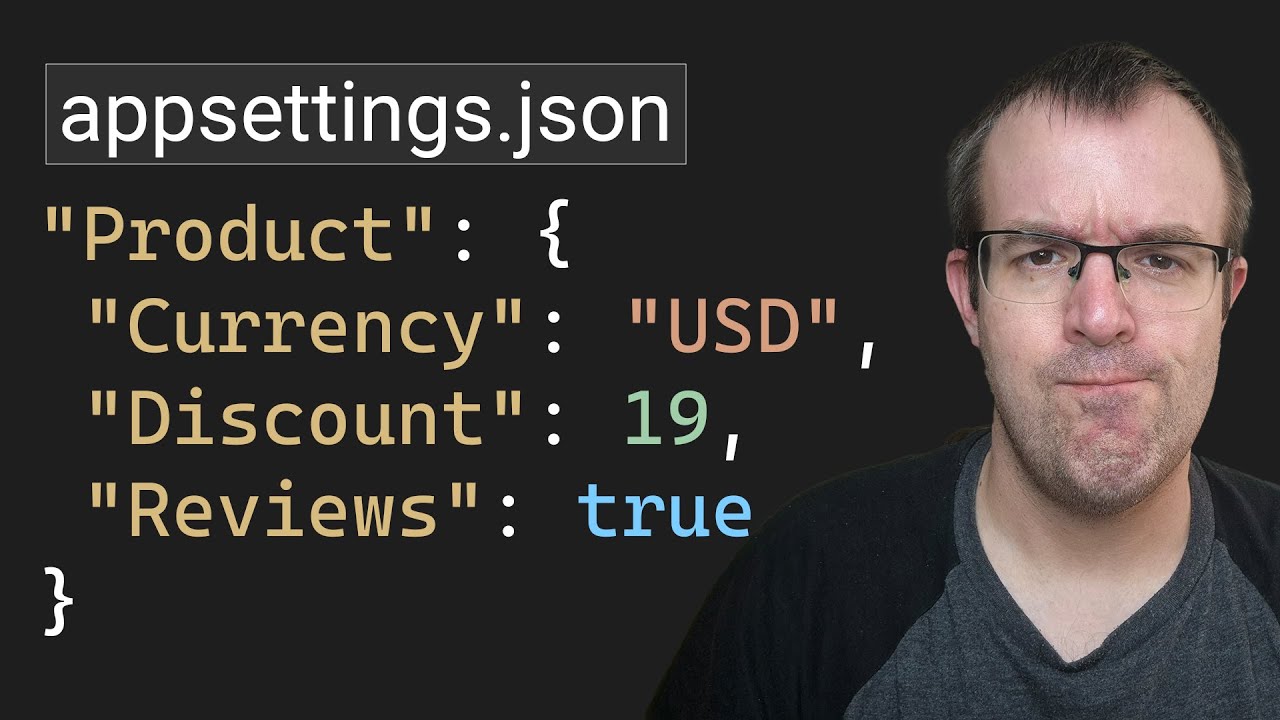
youtube.com
YouTube
How should you get config values from appsettings.json?
When creating a custom scope in a .NET project, you can now create it asynchronously. The 'await' keyword has to appear before the 'using' statement, and you call the CreateAsyncScope.

To add the default extensions to wwwroot files in ASP .NET Core, you can add app.UseDefaultFiles() in Program.cs. This will add Default and Index (.htm and .html) as default files for a folder. It must be called before app.UseStaticFiles().
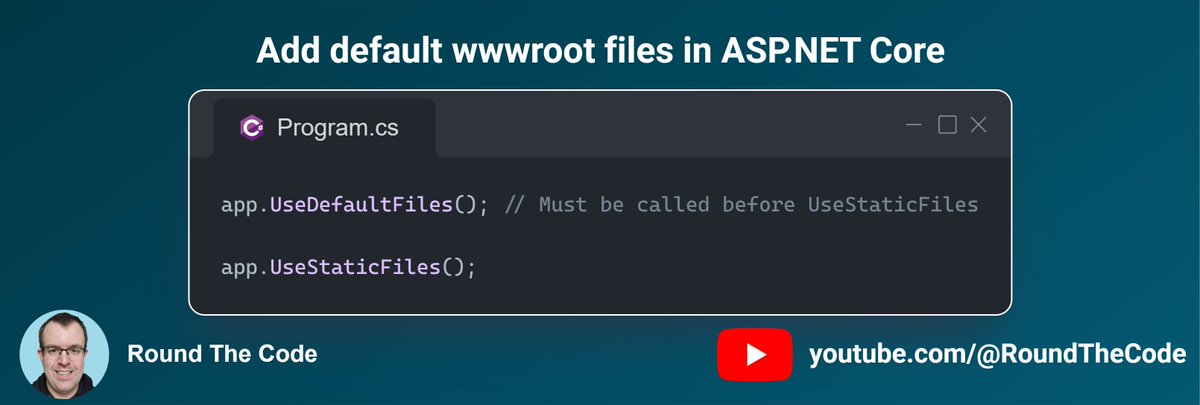
If you want to use IHttpClientFactory outside of ASP .NET Core, you can add Microsoft.Extensions.DependencyInjection and Microsoft.Extensions.Http to your project. Then build a service collection by adding your HttpClient to it.
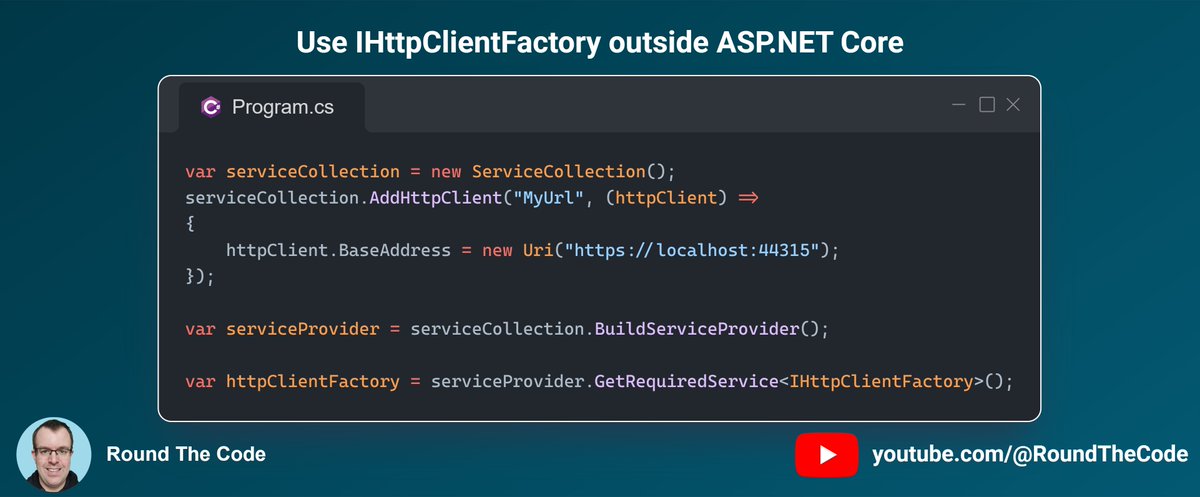
In SignalR, you can use Clients.All to invoke a method to all connected clients. However, you can invoke a method to the connected client by using Clients.Client(Context.ConnectionId). This is handy if you want to send a message back after they sent one.

.NET 7 has now reached end-of-life meaning it's time to update! By not doing so risks your application's security. That's because Microsoft will no longer make any more updates to .NET 7 & won't put in fixes for newly found bugs. Watch my video for more: youtube.com/watch?v=Eywsbo…

youtube.com
YouTube
.NET 7 apps must be updated now to stop vulnerabilities
You can add custom middleware to your ASP .NET Core app by using app.Use. This example will add a response header of X-Frame-Options with a value of SAMEORIGIN. You can also add it in a class and register it by using app.UseMiddleware();

Have you tried using VS Code to develop a .NET application? Watch my video where we develop an Web API project and run it using Visual Studio Code. How does it compare to Visual Studio? youtube.com/watch?v=ljXDKB…

youtube.com
YouTube
What's it like using VS Code to build a .NET project?
You can use a scoped service in a .NET background task like a hosted service. Inject the IServiceProvider instance, and then call the CreateScope method within it. You can use that scope instance to resolve a scoped service.

Theory in xUnit allows you to add parameterised tests. You can add [InlineData] with [Theory] to your tests and add the parameters you wish to test against. This stops adding unit multiple tests for the same logic.
![RoundTheCode's tweet image. Theory in xUnit allows you to add parameterised tests.
You can add [InlineData] with [Theory] to your tests and add the parameters you wish to test against.
This stops adding unit multiple tests for the same logic.](https://pbs.twimg.com/media/GRqbJ-gW8AAdgA6.jpg)
Useful .NET xUnit commands: Creates xUnit project: dotnet new xunit Adds NuGet package dotnet add package Moq Runs a test: dotnet test
Useful .NET commands: Creates new Web API project: dotnet new webapi -n MyProject -controllers Creates interface: dotnet new interface --name IMyService Creates class: dotnet new class --name MyService Creates API controller: dotnet new apicontroller --name MyController
If an unhandled exception is thrown in C#, it will always run the finally block if you are using ASP .NET Core. However if you are using a console app, the program will exit before calling the finally block meaning that it will never execute.

IOptionsSnapshot allows you to bind config values from appsettings into a class. You add the options in Program.cs and can inject IOptionsSnapshot adding the config class as the generic type. It has a scoped lifetime scope meaning values can change without restarting the app.
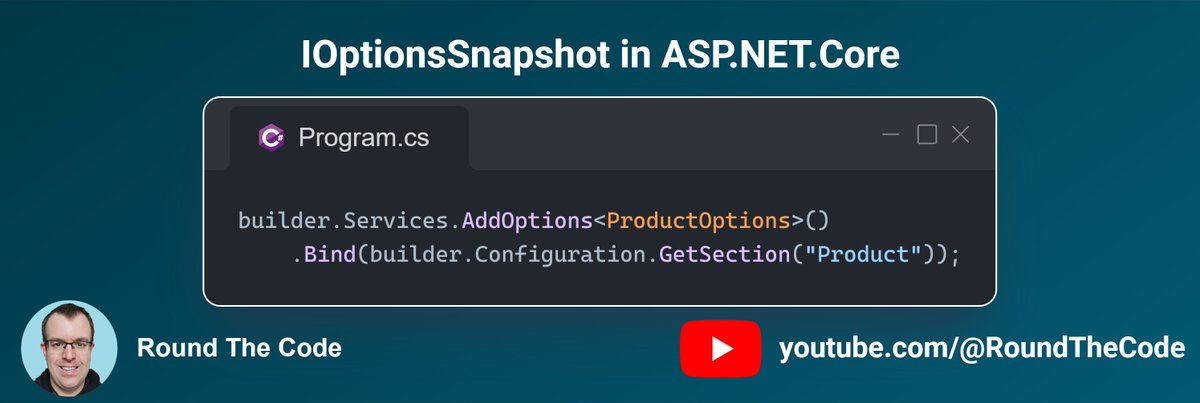

United States Trends
- 1. Game 7 73K posts
- 2. jungkook 788K posts
- 3. #Talus_Labs N/A
- 4. Kawhi 7,425 posts
- 5. Ja Morant 5,285 posts
- 6. Glasnow 6,578 posts
- 7. Barger 5,986 posts
- 8. Happy New Month 125K posts
- 9. vmin 3,060 posts
- 10. Sasaki 10.9K posts
- 11. Bulls 31.2K posts
- 12. #RipCity N/A
- 13. Grizzlies 7,197 posts
- 14. Clement 5,038 posts
- 15. Roki 7,686 posts
- 16. Halloween 2025 203K posts
- 17. Justin Dean 2,419 posts
- 18. Yamamoto 36.1K posts
- 19. #LetsGoDodgers 11.2K posts
- 20. Rojas 11.2K posts
Was dir gefallen könnte
-
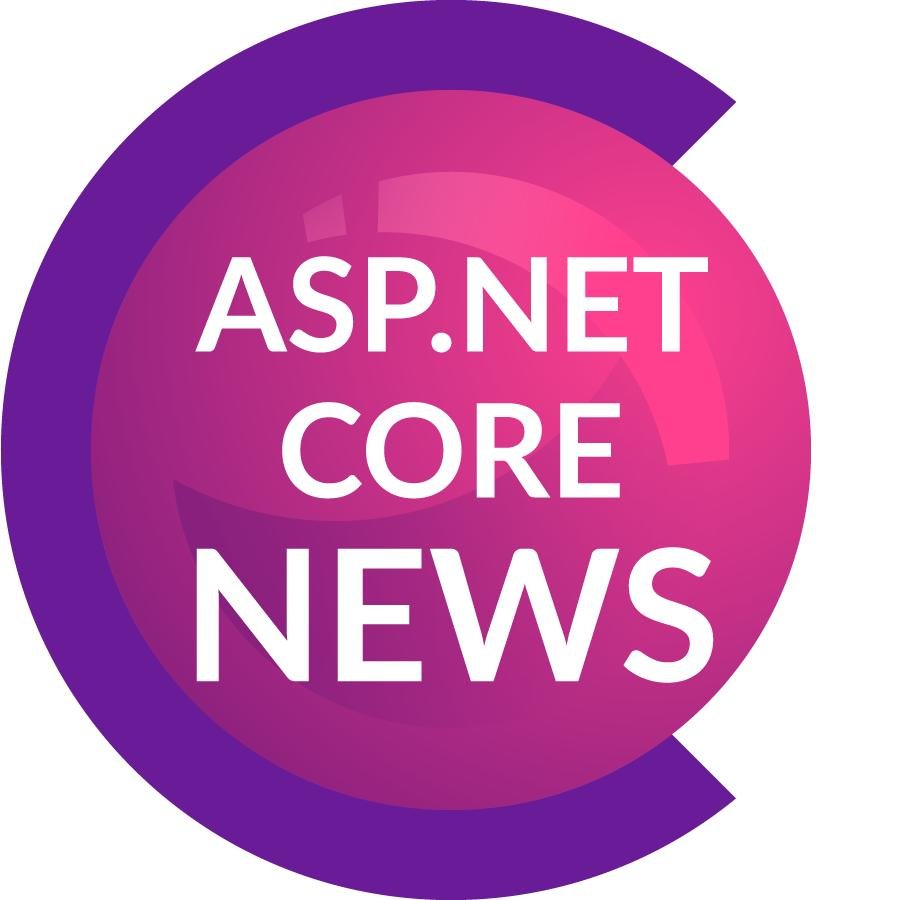 ASP.NET Core News
ASP.NET Core News
@aspnetcore_news -
 Andrew Lock "Sock"
Andrew Lock "Sock"
@andrewlocknet -
 Daniel Roth
Daniel Roth
@danroth27 -
 Jon P Smith
Jon P Smith
@thereformedprog -
 Mukesh Murugan
Mukesh Murugan
@iammukeshm -
 EzzyLearning.net
EzzyLearning.net
@ezzylearning -
 BuiltWithDot.Net
BuiltWithDot.Net
@BuiltWithDotNet -
 Anthony Giretti 🇨🇦🇫🇷🇮🇹
Anthony Giretti 🇨🇦🇫🇷🇮🇹
@anthonygiretti -
 Dmitry Pavlov
Dmitry Pavlov
@dr_dimaka -
 Waqas Anwar
Waqas Anwar
@waqasnet -
 Luke Parker
Luke Parker
@LukeParkerDev -
 Steven T. Cramer #dotnet
Steven T. Cramer #dotnet
@StevenTCramer -
 Tomasz Pęczek
Tomasz Pęczek
@tpeczek -
 Mladen Macanović
Mladen Macanović
@MladenMacanovic
Something went wrong.
Something went wrong.

























































